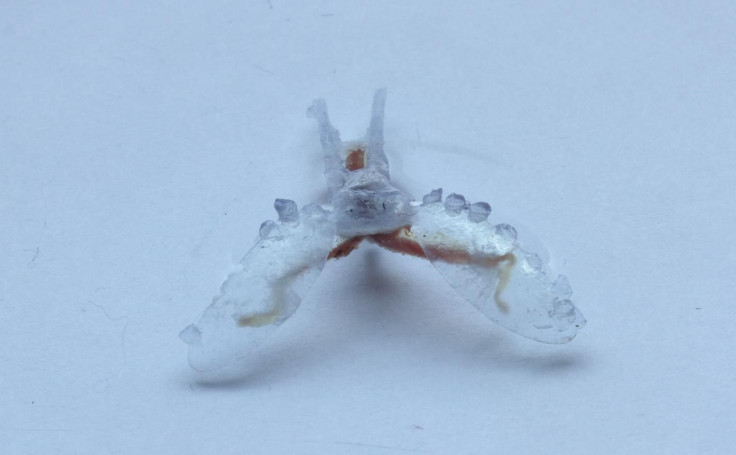Scientists Create Biohybrid Robot With Sea Slug Muscles And 3D-Printed Parts

Researchers from the Case Western Reserve University in Ohio used tissues from a sea slug and 3D-printed components to create a biohybrid robot that can crawl like sea turtles on a beach.
The robot, just under two inches long, can “walk” at a pace of 0.43 centimeters a minute when an external electrical current is applied which forces the muscles to contract. The scientists behind this biohybrid robot believe that in the future, an army of such robots could be used for a variety of tasks like locating the source of a toxic leak in a pond or even searching the ocean floor for a flight data recorder.
“We’re building a living machine--a biohybrid robot that's not completely organic yet,” lead researcher and PhD student Victoria Webster said in a statement. “We want the robots to be compliant, to interact with the environment. One of the problems with traditional robotics, especially on the small scale, is that actuators — the units that provide movement — tend to be rigid.”
Webster and her team used muscles from Aplysia californica, a sea slug also known as the Californian sea hare. They used muscles from the slug’s mouth and even collagen from the slug’s skin. The muscles from the mouth help with the robot’s movement since muscle cells are compliant, making them safer than nuts-and-bolts actuators and have a much higher power-to-weight ratio, Webster said.
But researchers said that future version of the biohybrid robot will feature ganglia, the bundles of neurons and nerves that normally conduct signals to the muscle as the slug feeds, as an organic controller instead of the external electrical stimuli.
The slug’s collagen was used to build an organic scaffold, which will be tested in later versions of the robot.
The scientists picked the Californian sea hare for the animal’s durability. It has the capacity to withstand substantial changes in temperature, salinity and more as Pacific Ocean tides shift its environment between deep water and shallow pools. This slug is much more adaptable to different environments.
Thanks to the organic nature of the robots, they can be discarded after use and left to degrade without fears of the environment.
Director of Case Western Reserve’s Biologically Inspired Robotics Laboratory Roger Quinn said, “We're creating a robot that can manage different tasks than an animal or a purely manmade robot could.”
© Copyright IBTimes 2024. All rights reserved.






















